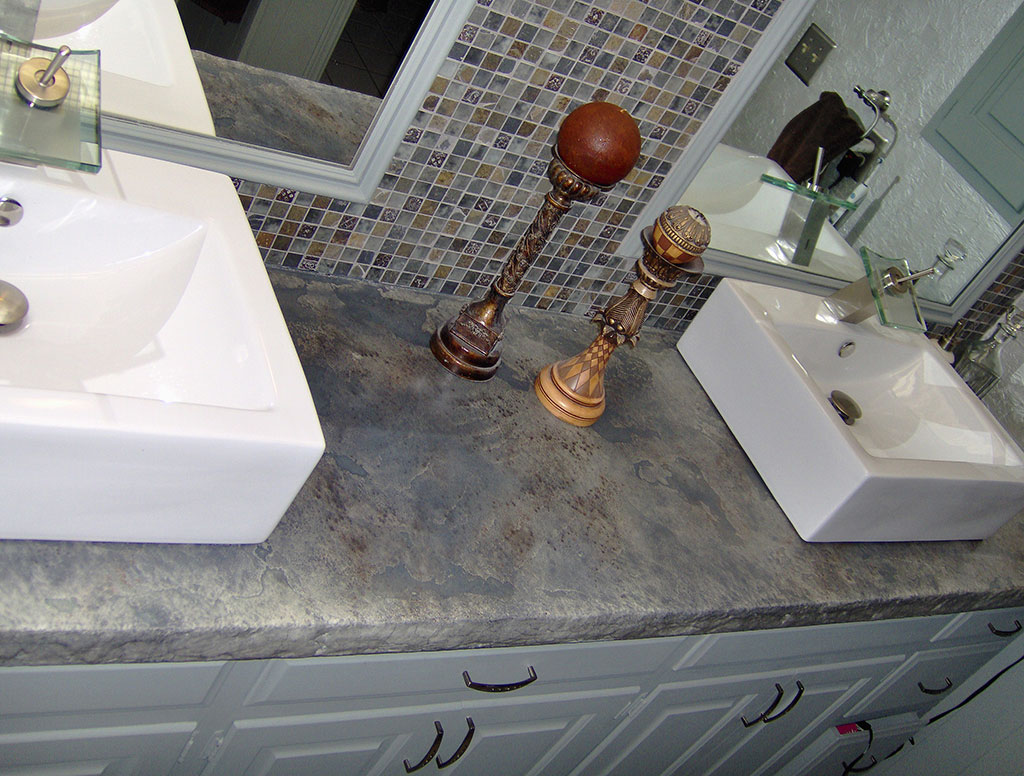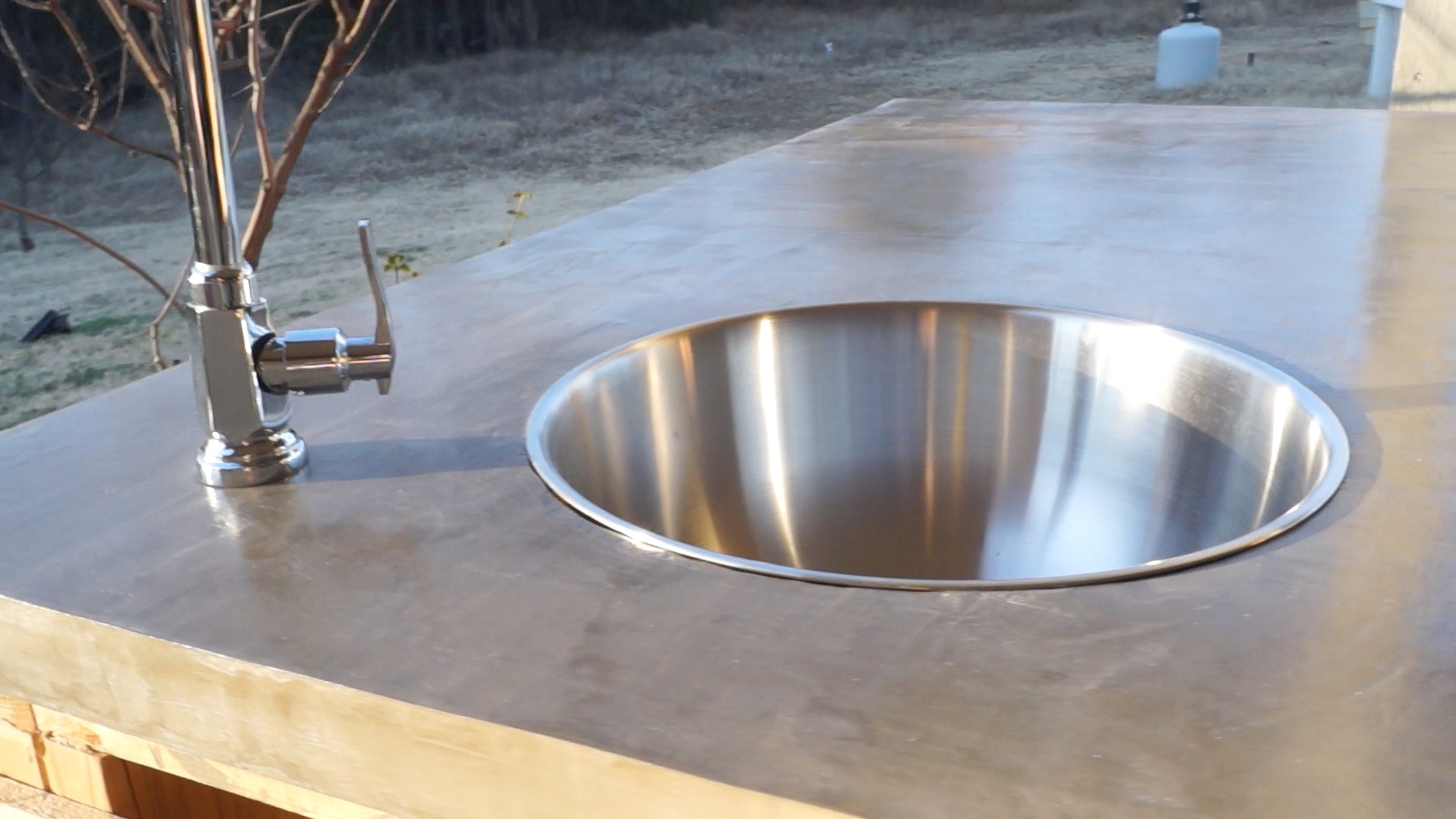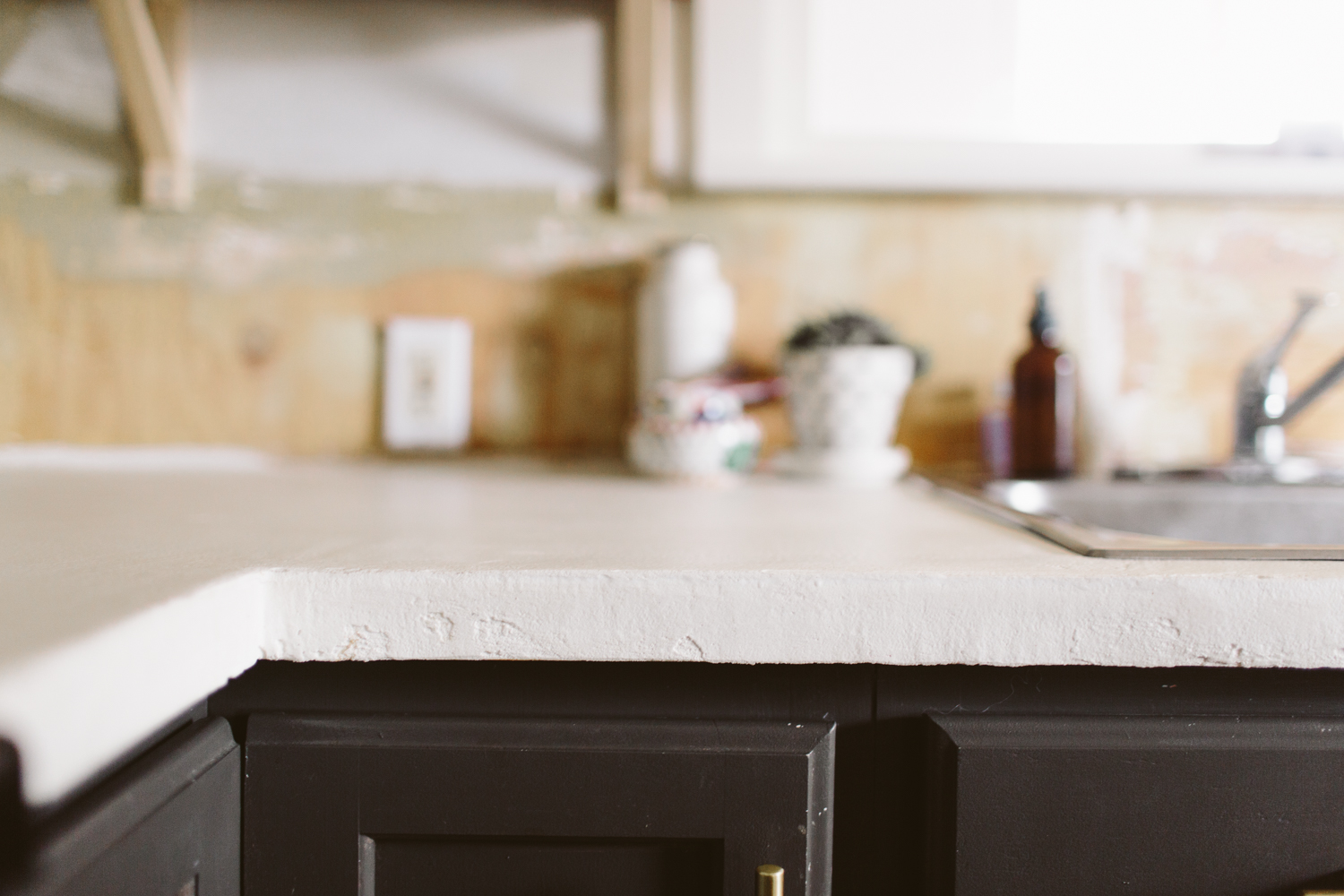Overlay concrete countertops have become an intriguing option for those looking to transform their kitchen or bathroom without the need for a full remodel. The idea of applying a thin layer of concrete over an existing surface to create a new countertop is appealing to many because of the durability, versatility, and aesthetic appeal of concrete. When I first heard about this concept, I was intrigued by how easy it sounded and how it could be a budget-friendly alternative to tearing out old counters. What I love about overlay concrete countertops is that they allow for customization, meaning you can create something unique and tailored to your style.
One of the things I find most interesting about overlay concrete countertops is the endless design possibilities. You can color the concrete, stain it, or even embed objects like glass or stone to give the surface a one-of-a-kind look. This kind of customization sets concrete apart from other materials like granite or quartz, which are beautiful but tend to be more limited in terms of creativity. With concrete, the options seem almost limitless, and it gives homeowners a chance to express their style in a way that’s both practical and beautiful.
Installing an overlay concrete countertop might sound daunting, but with the right tools and a bit of patience, it’s something that a DIY enthusiast can tackle. I’ve found that the process involves applying a specially formulated concrete mix over the existing countertop, whether it’s laminate, tile, or even wood. What’s great is that you don’t need to rip out the old surface; instead, you just apply the concrete on top. This not only saves time but also reduces the mess and cost associated with a complete renovation. Plus, the fact that you’re working with a thin layer of concrete makes the project more manageable.
Of course, preparing the existing countertop is key to ensuring a smooth and lasting overlay. I’ve found that cleaning the surface thoroughly is the first step, as any dirt, grease, or residue can affect the way the concrete adheres. Sanding the countertop slightly to create a rough texture also helps the concrete stick better. In some cases, applying a bonding agent to the surface can be beneficial, especially if you’re working with a material like tile, which can be more challenging to cover with concrete.
The actual application of the concrete overlay is where the fun begins. The concrete is mixed to a consistency that’s easy to spread, almost like frosting a cake. I recommend working in small sections and using a trowel to smooth out the surface. The key here is patience and attention to detail because any imperfections in the application process will be visible once the concrete dries. I’ve found that keeping the surface as smooth and even as possible is critical to achieving a professional look.
One of the advantages of overlay concrete countertops is the opportunity to create a variety of finishes. Some people prefer a smooth, polished look, while others like the more rustic, textured appearance that concrete can provide. I enjoy experimenting with different techniques to create unique finishes. For a polished look, sanding the surface after it has dried and then sealing it can give the concrete a glossy, high-end appearance. On the other hand, a more natural, matte finish can be achieved by leaving the surface slightly rougher and applying a matte sealer.
Another aspect I appreciate about concrete countertops is their durability. While the concrete itself is strong, the key to ensuring it lasts for years is in the sealing process. Concrete is naturally porous, which means it can absorb liquids and become stained if it’s not properly sealed. I’ve learned that applying a good quality sealer is crucial to protecting the countertop from water, oil, and food stains. Regular maintenance, like reapplying the sealer every year or two, will help keep the surface looking great and performing well over time.

Temperature fluctuations can also be a concern with concrete countertops, especially in kitchens where hot pots and pans are frequently used. While concrete is generally heat-resistant, it’s still a good idea to use trivets or hot pads to avoid thermal shock, which can cause cracks in the surface. Concrete can expand and contract with changes in temperature, and while overlay concrete countertops are less prone to cracking than thicker slabs, taking care to protect the surface from extreme heat is a smart practice.
One thing that’s surprised me about overlay concrete countertops is how easy they are to clean. A mild soap and water solution is usually all you need to wipe down the surface, and because the sealer acts as a protective layer, the countertop is resistant to most stains and spills. However, it’s important to avoid using harsh chemicals or abrasive cleaning tools, as these can wear down the sealer over time and expose the porous concrete underneath. With the right care, maintaining a concrete countertop is relatively straightforward.
Another major benefit of overlay concrete countertops is how budget-friendly they can be compared to other materials. I’ve found that, because you’re applying a thin layer of concrete over an existing countertop, you save on both the cost of materials and labor. In fact, many people choose to do the installation themselves, which can further reduce costs. Plus, the ability to customize the color and finish means you don’t have to spend extra on expensive materials to get the look you want.
While concrete countertops are often associated with modern or industrial-style kitchens, I’ve seen them used in a wide range of design styles. Whether you’re going for a sleek, minimalist look or something more rustic and cozy, concrete can be tailored to fit your aesthetic. The versatility of the material allows it to blend seamlessly into a variety of spaces, and its natural, neutral tones provide a beautiful contrast to bold cabinetry or statement backsplashes.

Another thing I love about overlay concrete countertops is their eco-friendly appeal. Concrete is made from natural materials, and when used as an overlay, you’re essentially repurposing your existing countertop rather than sending it to a landfill. This makes concrete a more sustainable option compared to some other countertop materials, especially when paired with low-VOC sealers and stains that minimize environmental impact.
One of the challenges I’ve encountered with overlay concrete countertops is the drying and curing process. While the concrete may appear dry within a few hours, it’s important to give it ample time to fully cure before applying the sealer or using the countertop. Depending on the thickness of the overlay and the humidity levels in your home, this process can take anywhere from a few days to a week. Rushing this step can lead to cracks or imperfections in the finished surface, so patience is key.
Even with the challenges, I’ve found that the benefits of overlay concrete countertops far outweigh the drawbacks. The ability to completely transform a space with a material that’s durable, customizable, and budget-friendly is incredibly rewarding. Plus, knowing that I can always sand down and refinish the surface if needed gives me peace of mind that the countertop will continue to look great for years to come.
In the end, overlay concrete countertops offer a unique and affordable way to update your kitchen or bathroom. They allow for creativity in design, are relatively easy to install, and provide a durable surface that can withstand the wear and tear of daily life. Whether you’re looking to refresh your space with a modern industrial vibe or add a touch of rustic charm, concrete overlays are a versatile solution that can fit your needs.

Common Mistakes to Avoid
One common mistake when working with overlay concrete countertops is failing to properly prep the existing surface. If the surface isn’t cleaned and sanded beforehand, the concrete may not adhere well, leading to cracks or peeling over time. Take the time to clean, sand, and apply a bonding agent if necessary to ensure a strong bond.
Another mistake is rushing the application process. Applying too much concrete at once or not smoothing it out properly can result in an uneven surface. Work in small sections, and take your time smoothing out the concrete to avoid imperfections.
Not using a sealer is another big mistake. Because concrete is porous, it can easily absorb liquids and become stained if not sealed properly. Skipping this step will leave your countertop vulnerable to damage, so always apply a high-quality sealer after the concrete has cured.
Using harsh cleaning products is another mistake people often make. Abrasive cleaners can wear down the sealer and expose the porous concrete underneath. Stick to mild soap and water for cleaning to prolong the life of your countertop.
Lastly, failing to give the concrete enough time to cure is a mistake that can lead to cracking or imperfections in the finish. Be patient, and allow the concrete to fully cure before applying the sealer or using the countertop.

How thick is the concrete overlay applied on countertops?
Concrete overlays are typically applied in thin layers, usually about 1/4 to 1/2 inch thick. This makes it easier to work with and allows it to adhere to the existing countertop surface without adding too much bulk. The thin layer also makes the installation process faster and more manageable for DIY projects.
Do overlay concrete countertops crack easily?
While concrete can be prone to cracking, proper installation and sealing can minimize this risk. Overlay concrete countertops are generally less likely to crack than thicker slabs, but it’s important to ensure the surface is properly prepared and allowed to cure fully before use. Additionally, using trivets for hot pans can help prevent cracks caused by thermal shock.
Can I apply a concrete overlay over any type of countertop?
Yes, concrete overlays can be applied over a variety of countertop materials, including laminate, tile, and wood. The key is to properly prep the surface by cleaning, sanding, and, if necessary, applying a bonding agent. This ensures that the concrete adheres well to the existing surface.

How long does it take for overlay concrete countertops to cure?
The curing time for overlay concrete countertops can vary depending on the thickness of the layer and the humidity levels in your home. While the surface may feel dry within a few hours, it’s important to give the concrete at least a few days to fully cure before applying the sealer or using the countertop. Rushing this process can lead to cracks or imperfections.
Are overlay concrete countertops difficult to maintain?
Maintaining overlay concrete countertops is relatively easy as long as they are properly sealed. Regular cleaning with mild soap and water, along with reapplying the sealer every year or two, will help protect the surface from stains and wear. Avoid using harsh chemicals or abrasive tools, as these can damage the sealer.
Can I change the color of my concrete overlay countertop?
Yes, one of the benefits of concrete is that it can be customized with color. You can use pigments in the concrete mix or apply a stain after the concrete has cured to achieve your desired color. This makes concrete overlays a versatile option for those looking to create a unique and personalized countertop.

Concrete Countertop DIY – A Beautiful Mess

DIY OVERLAY CONCRETE COUNTERTOPS u2014 Modern Builds

Remodelaholic DIY Concrete Countertop Reviews

Related articles:
- Outdoor Concrete Countertops
- How To Make Concrete Countertops Smooth
- Rustic Concrete Countertops
- Farmhouse Concrete Countertops
- Concrete Countertops Outdoor Kitchen
- How To Stain Concrete Countertops
- DIY Concrete Countertop Mix
- Concrete Countertops Made Easy
- Concrete Countertop Overlay
- Black Concrete Countertops
